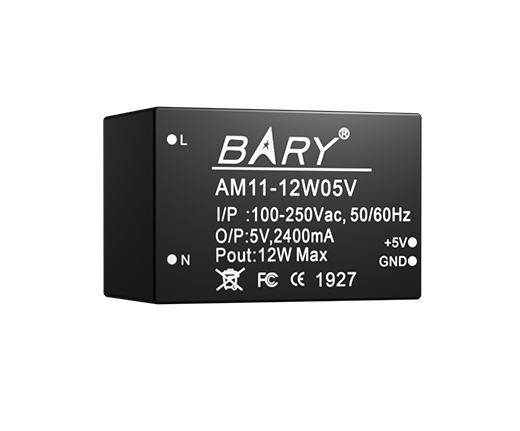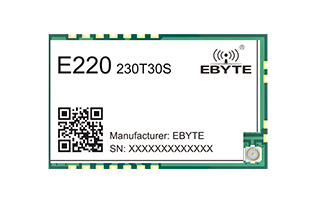

In the world of electronic devices, data is transmitted in a variety of ways. Among them, serial communication is a common data transmission method. With its simple, reliable and extensive characteristics, it has become an important means of communication between electronic devices. In serial communication, there is a very important parameter - baud rate. Why do we need to set the baud rate for serial communication? Today, let’s learn about baud rate.
Related article :
What is serial port baud rate?
We need to first understand what baud rate is. Baud rate is a unit for measuring data transmission rate, which represents the number of symbols (symbols) transmitted per second. In other words, the baud rate is the "pulse" of data, which determines the speed at which data is transmitted.
The relationship between baud rate and bit rate:
Bit rate = baud rate * number of bits corresponding to a single modulation state.
Through different modulation methods, multiple bits of information can be loaded on one symbol.
In serial communication, the transmitted symbols are bits, so the baud rate = bit rate = the value of the clock cycle.
The serial baud rate is the number of bits transmitted per second in serial communication. It is an important parameter of serial communication, which determines the speed and stability of serial communication. Generally speaking, the higher the baud rate, the faster the data transfer speed. The baud rate is determined jointly by the sender and receiver. In serial communication, the sender and receiver need to agree on a common baud rate in some way (such as a protocol), and then send and receive data according to this baud rate.
According to different application requirements, serial port baud rates can be mainly divided into the following types:
①Standard baud rate: including 2400, 4800, 9600, 19200, 38400, 57600, 115200 and other standard baud rates. Among them, 9600 baud rate is the most commonly used and can meet most communication needs.
②High baud rate: 230400, 460800, 921600 and other high baud rates, suitable for applications that require higher data transmission speed.
③Adaptive baud rate: Automatically select the appropriate baud rate based on the communication protocol and transmission medium of both communicating parties.
④Programmable baud rate: You can set the baud rate as needed, mainly used in some special application scenarios.
Why do we need to set the baud rate for serial communication?
Assuming that the sender and receiver do not agree on a common baud rate, then they cannot correctly parse the data sent by the other party, resulting in communication failure. It can be seen that setting the baud rate is the key to ensuring the success of serial communication. When we perform serial communication, we must pay attention to the setting of the baud rate.
The baud rate generally needs to be specified in hardware asynchronous communication, that is, there is no synchronous clock line (CLK) on the hardware. Because there is no clock line for synchronization, the sender and receiver need to set the sending and receiving baud rates.
How to calculate serial port baud rate
Serial port baud rate is the core parameter of serial port communication. In serial port communication, commonly used baud rates are 9600, 19200, 38400, 57600, 115200, etc. These baud rates are all powers of 2 because computers process binary data most efficiently.
There are two main methods for calculating the serial port baud rate: direct method and indirect method. The direct method calculates the baud rate by measuring the number of pulses transmitted per unit time. This method is simple and easy to implement, but requires special test equipment. The indirect method calculates the baud rate by measuring the number of characters transmitted per unit time. This method does not require special test equipment, but the calculation process is more complicated.
We can calculate the serial port baud rate through the following formula:
Baud Rate = Symbol Rate / (Number of bits per symbol)
Symbol Rate: It is the number of signal changes represented by each symbol (such as a bit);
Number of bits per symbol: It is the number of bits represented by each symbol.
How to choose the serial port baud rate?
In practical applications, it is usually necessary to set and adjust the serial port baud rate through software. Most programming languages provide functions or methods for setting the serial port baud rate. Users only need to call these functions or methods to conveniently set and adjust the serial port baud rate. Adjust the serial port baud rate. Due to hardware and software limitations, the actual serial port baud rate may be lower than the set baud rate. This phenomenon is called "baud rate error". In order to reduce the baud rate error, we can take some measures, such as using high-quality serial lines, optimizing software algorithms, etc.
The selection of serial port baud rate needs to be determined according to specific communication needs. If the amount of data to be transmitted is small, you can choose a lower baud rate; if the amount of data to be transmitted is large, you need to choose a higher baud rate. At the same time, communication stability and anti-interference ability also need to be considered. Generally speaking, a higher baud rate can improve the stability and anti-interference ability of communication, but it will also increase the complexity and cost of the hardware. In addition, asynchronous communication does not have a clock synchronization signal, and there is error accumulation in sampling in each byte transmitted. It is generally used for low-speed equipment.
In addition to basic data transmission functions, serial port communication can also implement some advanced functions, such as parity check, data bit check, stop bit setting, etc. These advanced features can further improve the stability and reliability of serial communication.
ABOUT US :
Ebyte is a national high-tech enterprise specializing in the research and development of wireless modules and industrial IoT terminals. Independently developed and produced products include LoRa/WiFi Wireless Module/Bluetooth/ZigBee wireless modules, 4G networking equipment, Ethernet modules, NB-IoT data transmission terminals, industrial IoT.









